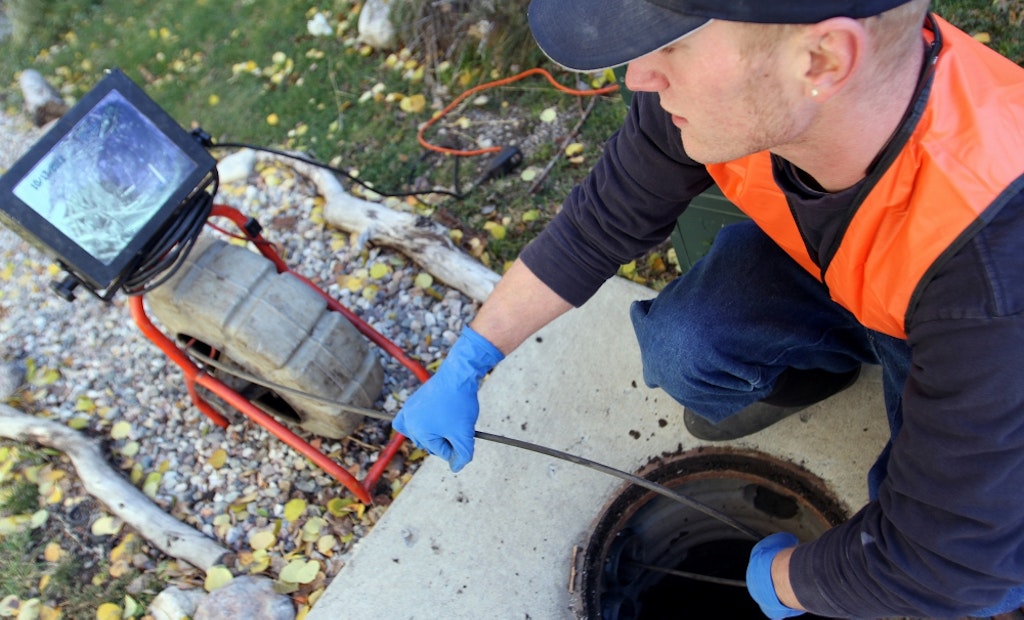
Interested in Plumbing?
Get Plumbing articles, news and videos right in your inbox! Sign up now.
Plumbing + Get AlertsAdam Teets can sympathize with contractors using an inspection camera to discover a problem in a line.
“You see the object causing the obstruction right there and there’s a temptation to just start using the camera to push at it and move it out of the way,” says Teets, a service manager with RIDGID. “But you need to fight the urge, since doing something like that will only damage the equipment.”
The waterproof cameras have a flexible rod and can be maneuvered around corners as needed, but while they are a valuable tool for plumbers and drain cleaners, they can wear out or break if not used properly.
Dave Dunbar, assistant sales manager for General Pipe Cleaners, says reels with kinks or damaged camera heads are the most common repairs that land equipment in repair shops.
To prevent that from happening to you and to get the most use out of your equipment, industry experts shared these tips:
KEEP HANDS NEAR
When a contractor’s hands are near the opening, he is able to provide greater control over the reeling. Without proper control, the reeling can kink up or move too quickly and potentially cause damage to the camera, Teets says.
DON’T USE CAMERA AS A TOOL
Dunbar says the camera being used to inspect clogged pipes is similar in design to cameras used to record family events.
“Most of the damaged camera heads that arrive at repair centers have a cracked lens cover or light ring,” he says. “The LED lights are hidden behind bulletproof Plexiglas and the whole thing is either pipe threaded or epoxied to the end of the pushrod so it’s sealed up like an Egyptian tomb. That sounds impressive, but it’s really no defense against an overly enthusiastic drain cleaner.”
As Teets mentioned, it can be tempting for a contractor to use the equipment to push the obstruction out of the way, but “that’s asking for trouble. You need to remember the camera is a diagnostic tool. You are trying to find out what’s wrong.”
KEEP IT CLEAN
Keeping the camera and reeling clean will improve the equipment’s longevity.
“I always keep rags in my truck and wipe it all off after I pull it out,” Teets says. “Some people pour clean water over the cable as they pull it out, but if there’s a backup, adding more water is not always the best move.”
GO SLOW
When starting on a project, the key is to move slowly and carefully as you put the pushrod into the pipe. If a worker moves too quickly or applies too much force, Dunbar says the pushrod will bow out and kink up.
“Once you are in, use short, fast motions to get around a bend and watch where you’re going,” he says. “Just pay attention.”
A kink in the reeling can be expensive to fix, with Dunbar estimating it to be up to $600.
As part of the repair, technicians usually cut the reel above the kink, which also creates a shorter reel, Teets says. “You have less flexibility with the camera and may not be able to see as far into the pipe,” he says.





